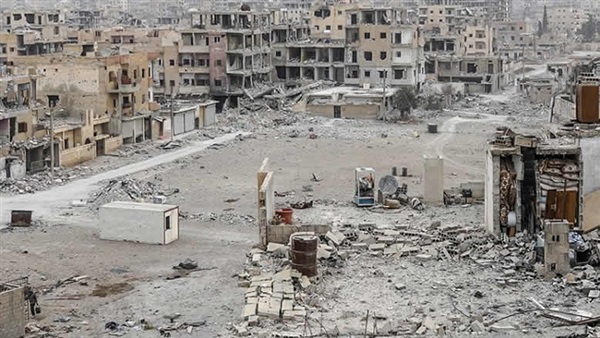Over 120 Syrian churches damaged by war since 2011

A Syrian war monitor associated with the opposition
said Monday that over 120 Christian places of worship have been damaged or
destroyed by all sides in the country’s eight-year conflict.
Some of the attacks were deliberate, such as the
Islamic State group using bulldozers to destroy the ancient Saint Elian
Monastery in Homs province in 2015. The majority, however, were caused by
front-line combat, shelling or rockets.
Christians made up about 10 percent of Syria’s
pre-war population of 23 million, who co-existed with the Muslim majority and
enjoyed freedom of worship under President Bashar Assad’s government. Most have
left for Europe over the past 20 years, with their flight significantly
gathering speed since the start of the current conflict.
Around half of all Syrians are now either internally
displaced or have left the country.
The report was issued by the Syrian Network for
Human Rights, which is registered in the United Kingdom and whose founder and
chairman lives in Qatar.
The group, which collects statistics on the war,
said government forces were responsible for 60% of the 124 documented attacks
since fighting erupted in March 2011. The rest were blamed on IS militants, the
al-Qaida-linked group Hayat Tahrir al-Sham and other factions of the armed
opposition.
There was immediate comment from the government,
which rarely comments on reports from foreign organizations.
“Targeting Christian places of worship is a form of
intimidation against and displacement of the Christian minority in Syria,” said
Fadel Abdul Ghany, the founder and chairman of SNHR.
The report said IS was behind 10 attacks on
Christian sites, five of which were in the northern city of Raqqa, once the
extremists de-facto capital. The group was known for displacing and killing
Christians in areas it controlled and confiscating their properties.
Hardest hit was the northern province of Aleppo,
with 34 attacks, 24 by rebels and six by the government.
The highest number of attacks by government forces —
27 out of 29 — was in the central province of Homs.
SNHR’s report also placed blame on Syrian government
allies Russia and Iran, but did not specify how many of the attacks they’d
caused.









